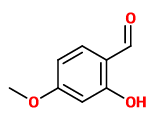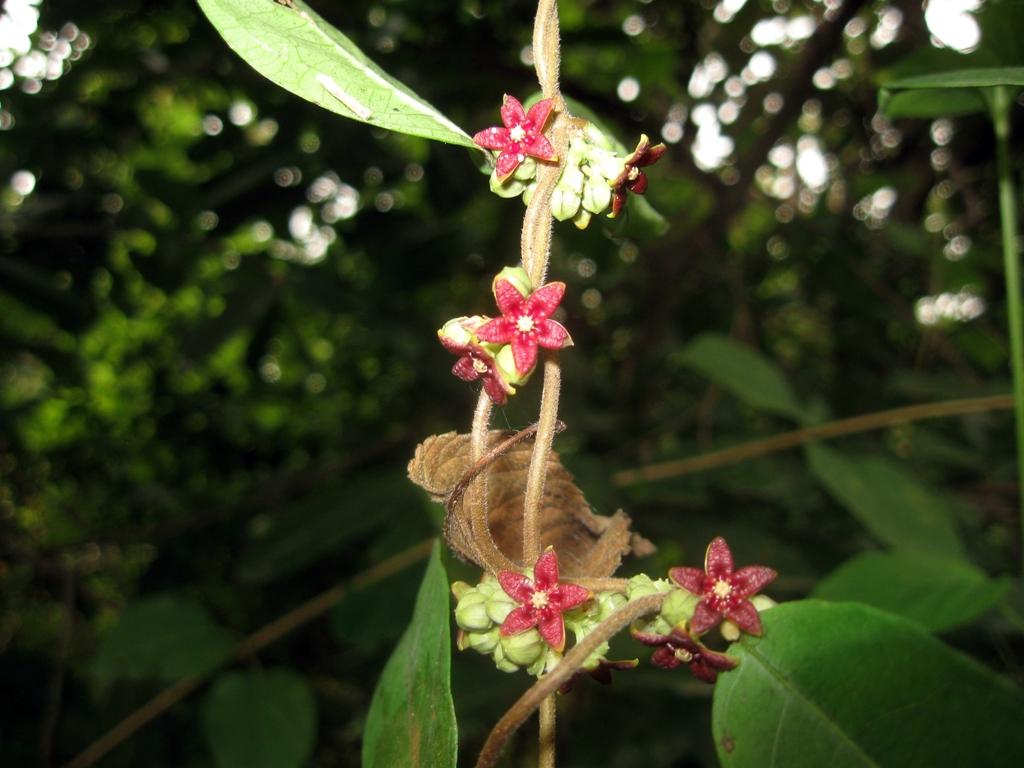Dies ist eine alte Version des Dokuments!
Hemidesmus indicus (L.) W.T.Aiton syn. Hemidesmus indicus (L.) R. Br.; Periploca indica L. - Apocynaceae
Indian sarsaparilla, false sarsaparilla, anantamul
Perennial climber, native to India, cultivated; leaves opposite, elliptic oblong to linear-lanceolate; flowers in cymes, calyx 5-lobed; corolla 5-lobed, green outside, purple inside.
„The root is a substitute for sarsaparilla (the dried root of the tropical species of Smilax, Smilacaceae; in India Smilax aspera L., and Smilax ovalifolia Roxb.). It should be distinguished from American Sarsaparilla Smilax aristolochiifolia Mill. and Jamaican Sarsaparilla Smilax ornata… Hemidesmus indicus is used to make beverages and also used in traditional medicine.“ https://en.wikipedia.org/wiki/Hemidesmus_indicus
The fragrant (in the direction of tonka bean/vanilla) roots of H.indicus are used in folk medicine because of their diuretic and tonifying action. The essential oil consists mainly of 4-methoxysalicylaldehyde (~80%) with a very adherent flowery-spicy scent, which is used in perfumery to modify vanillin and eugenol notes.
[Ohloff, Günther. Irdische Düfte-himmlische Lust: eine Kulturgeschichte der Duftstoffe. Birkhauser Basel, 1992, 303]
 2‐hydroxy‐4‐methoxybenzaldehyde (4-methoxysalicylaldehyde)
2‐hydroxy‐4‐methoxybenzaldehyde (4-methoxysalicylaldehyde)
„The fragrant roots of Hemidesmus indicus (Indian sarsaparilla) is used in Indian native medicine and herbal tea preparations. The volatiles obtained by steam distillation (yield, 0.25%) contained 2‐hydroxy‐4‐methoxybenzaldehyde (91%) and (−)-ledol (4.5%), which are isolable in pure form, as the major constituents. The GC-MS analysis of the residual oil showed the presence of over 40 minor constituents. Among them, nerolidol (1.2%), borneol (0.3%), linalyl acetate (0.2%), dihydrocarvyl acetate (0.1%), salicylaldehyde (0.1%), isocaryophyllene (0.1%), α‐terpinyl acetate (traces) and 1,8‐cineol (traces) are important as aromatic and bio‐active principles.“
[Nagarajan, S., L. Jagan Mohan Rao, and K. N. Gurudutt. „Chemical composition of the volatiles of Hemidesmus indicus R. Br.“ Flavour and fragrance journal 16.3 (2001): 212-214]
„…the fresh roots of D.hamiltonii contained 0.54% and dried roots from Karnataka, Andhrapradesh, and Tamilnadu contained 0.45, 0.52, and 0.06%, respectively. The dried root of H.indicus contained 0.03% 2-hydroxy-4-methoxybenzaldehyde.“
[Nagarajan, Subban, and Lingamallu Jagan Mohan Rao. „Determination of 2-hydroxy-4-methoxybenzaldehyde in roots of Decalepis hamiltonii (Wight & Arn.) and Hemidesmus indicus R. Br.“ Journal of AOAC international 86.3 (2003): 564-567] http://lib3.dss.go.th/fulltext/Journal/J.AOAC%201999-2003/J.AOAC2003/v86n3(may-jun)/v86n3p564.pdf
„Medicinal Uses: Bacteriostatic, anticancer, antiviral, antilithic, hypotensive, antifungal, antibacterial, anti-inflammatory, spasmodic activities have been reported.“
[George, Safheesh, et al. „Hemidesmus indicus (L.) R. Br. A Review.“ Journal of Plant Sciences 3.2 (2008): 146-156] https://scialert.net/fulltextmobile/?doi=jps.2008.146.156

Hemidesmus indicus flowers, gautala sanctury Kannad Dist Aurangabad, efloraofindia
https://sites.google.com/site/efloraofindia/species/a---l/a/apocynaceae/hemidesmus/hemidesmus-indicus
